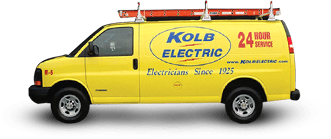You’re always conscientious about turning off lights in rooms that you’re no longer occupying because you take pride in keeping a green and sustainable household. But along with your desire to conserve resources, you also want to find ways to keep your electricity consumption in check and your electric bill low. You might ask, “What are the most energy-efficient and cost-saving lighting solutions available on the market today?” The answer comes in two parts: Light Emitting Diode (LED) and Compact Florescent Lights (CFLs).
What is LED Lighting?
Light Emitting Diode (LED) is a semiconductor light source that has many advantages over traditional incandescent and ordinary florescent lighting in the following ways:
- LEDs consume far less energy than their incandescent and regular florescent lighting counterparts.
- The lifetime of a LED can be more than 35 times that of an incandescent bulb.
- LEDs are powerful enough to light a room inexpensively and with less heat and therefore wasting less energy than ordinary fluorescents with comparable output.
These three LED features alone make energy-efficient and economic sense for your home’s lighting plan. By exchanging your incandescent bulbs with new LEDs, it will significantly lower your monthly electricity bill and reduce your carbon footprint by nearly 85 percent. Keep in mind that, although LEDs tend to be more expensive up front, the cost savings over incandescent bulbs will be realized on the back end because of the longer lifespan of LED lighting.
What are CFLs?
Compact Fluorescent Lights (CFLs) are made by bending traditional fluorescent tubing into compact configurations that fit easily into any ordinary incandescent fixture, including dimming and 3-way functioning lamps. CFLs use 60 percent less energy than standard incandescent ones, but gives off the same amount of light while lasting up to ten times longer. CFL bulbs are moderately priced – you’ll pay around $4 – $15 each but because they reserve so much on energy and last so much longer, you’ll save.
LEDs vs. CFLs
If your main concern is price, CFLs are the better value.
- If you want to place bulbs in a difficult-to-reach location, LEDs win because they need to be replaced less often.
- LEDs are very durable. CFLs, like incandescent bulbs, are made of glass and break easily.
Whichever you choose, CFLs or LED lighting, you’ll have a brighter future when you say goodbye to energy-draining, expensive, and land-filling incandescent lighting. CFLs and LEDs: Win, win.
If you have any questions about the differences between LEDs and CFLs, contact Kolb Electric.









